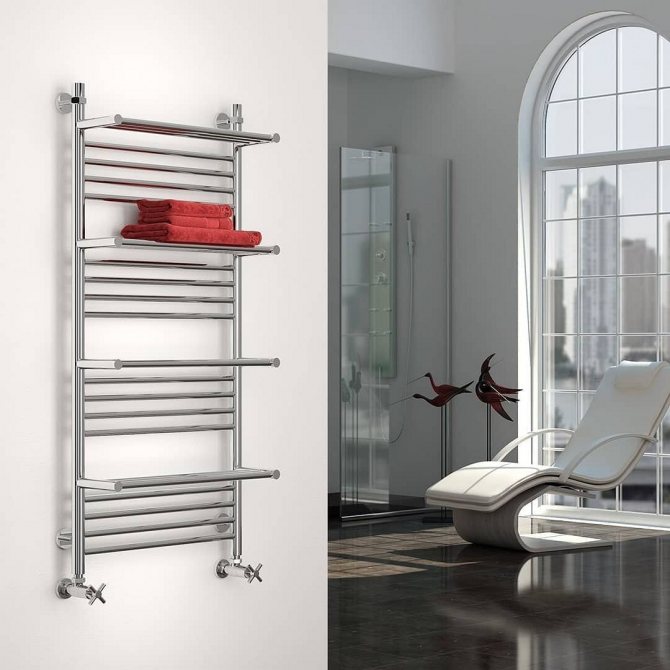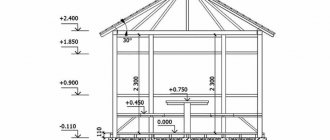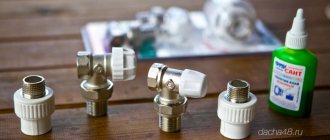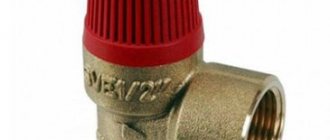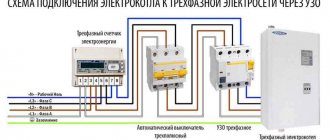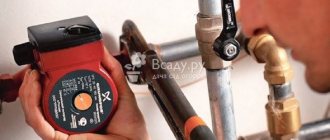Heated towel rail leaks what to do
A heated towel rail in the bathroom performs two functions at once: it heats the room and dries the bath towels laid out on it (hence its name).
- The main reasons for the leak
- Eliminating the leak
In fact, it is a serpentine curved radiator pipe connected to a riser of a heating or hot water supply system.
It often happens that, due to thermal expansion during operation, under the influence of increased pressure and corrosion, a heated towel rail is leaking.
What to do in this case? How to fix a leak? Everything in order.
The main reasons for the leak
Such a nuisance as a leak can occur at any time. And not only with an old and long-used heated towel rail, but also with a new, recently installed one. The reasons for this can be very diverse:
Reasons for the leak
- Towel dryers that have been in use for a long time can corrode. It should immediately be noted here that not only the metal pipes themselves are subject to corrosion, but also the places in which they are connected.
- Mechanical damage. In this case, a leakage problem may arise if the heated towel rail is accidentally damaged by some foreign object. Very often, mechanical damage occurs during repairs in the bathroom, as well as with a careless attitude to the dryer.
- Wear of parts. This is the main problem. Due to the wear of the rubber bands and gaskets, the dryer begins to flow precisely at the joints.
- Incorrect operating conditions. Often there are cases when a heated towel rail is completely different from the functioning of the system in the bathroom. So, for example, it can be noted that the coil may not be designed at all for the pressure from the system.
- Poor installation. A negligent attitude towards the installation of plumbing products, as well as non-compliance with simple rules during installation, can lead to a dryer leak.
- Defective equipment. Exceptions are quite rare, and mostly defective models very soon remind the owners of their shortcomings.
- Incorrectly routed pipes. During installation, the ends of the pipes may be pulled out crooked. In this case, you should not be surprised that after a while your heated towel rail began to leak.
As you can see for yourself, there are a lot of reasons for this. Even an insufficiently tightened internal hex can cause you a lot of trouble, including leakage too. That is why it is important to know not only the cause of the leak, but also a good enough way to quickly stop this leak.
Eliminating the leak
Eliminating the leak
You can connect a water heated towel rail with a hot water supply system in various ways: using an assembly of metal fittings, to connect to a wall-mounted water outlet, by supplying pipes made of copper, steel, metal-plastic or polypropylene with a union nut for connection.
Each of these connections has its own characteristics, and the occurrence of a leak in each case can have several different reasons. Therefore, it is worth examining each case separately.
Water seeps through the threads
When the water sockets are located in the wall, in the immediate vicinity of the place where the heated towel rail is installed, for example, a "ladder" with a bottom connection, it is convenient to use an assembly of metal threaded fittings, brass or stainless steel for connection.A "nipple" is connected to the water outlet, after which, if necessary, an extension cord, an angle with an internal or external thread, then an American and a transition sleeve can be installed.
Water seeps through the threads
It is quite possible that the drip of some of the elements of this connection was not twisted securely enough during installation, somewhere there is not enough winding. As a result, the entire structure flows. What to do in such a situation?
First of all, you need to carefully inspect all connections from this assembly and make sure that it flows precisely along the thread. There may be a problem elsewhere: for example, the American has an unimportant gasket and leaks from under the union nut. Then try tightening the nut with a wrench first.
If, upon inspection, you are convinced that the flow is really in the threaded connection, unscrew the fittings and take flax and plumbing paste. Many people prefer to use Unipak paste, it is designed to work at temperatures up to 140 ° C and does not affect water quality. In addition, together with flax fibers, it provides good tightness and makes it possible to adjust when assembling the joint.
You can use other similar pastes, silicone sealant. Previously, they used drying oil, red lead, but after applying paint, it is almost impossible to disassemble such a connection. For reeling it is better to use old reliable linen. Fum tape does not give such quality, it is more suitable for tapered connections.
Before winding flax, thoroughly clean the threads from dirt. Winding is carried out evenly along the entire length of the thread, in the direction of its pitch. An even layer of paste is applied on top. After a while, you can assemble and stretch the fittings and reconnect the condenser.
Water leakage under the union nut
Water leak
The heated towel rail can be connected to a common DHW system with pipes using a union nut. If a stream of water flows from under the nut, then the reason may be either an insufficiently stretched nut, or a worn gasket under the nut.
Due to the temperature difference, even a tightly tightened nut can loosen over time, therefore, so that it does not flow anymore, it is enough just to tighten it again with a wrench. For the same reason, water flows from under the nut if there is a fluoroplastic gasket under it. When cooled, the fluoroplastic tends to shrink slightly.
What if the rivulets are still flowing when tightening the nut? Unscrew the joint and go over all surfaces with automotive or silicone sealant. Give it time to dry. After that, the flow should stop.
Another option is to replace the gasket. You can buy new pads from the store or make your own. To do this, take a suitable sheet of rubber or paronite and cut new gaskets out of it, using the old one as a sample. If you pick up a piece of pipe of the required diameter, sharpen the edges on emery and, placing a wooden lining under the sheet, simply knock out the gasket with a hammer blow.
Paronite gaskets can be held in hot water for a while before installation. Sometimes it helps to install an additional gasket to the existing one.
Other causes of leakage
Other causes of leakage
If the heated towel rail is connected through a metal-plastic pipe, in this case, a crimp or press fitting is usually used. If the crimp fitting drips, chances are there is nothing to worry about. The pipe is put on such a fitting, which, as a rule, has 2 rubber (EDPM) gaskets, and is fixed on top with a compression ring (cracker). To eliminate the leak, you just need to tighten the nut. This should be done periodically, at least once a year.
Source: https://potolki-72.ru/protekaet-polotentsesushitel-chto-delat/
Varieties of American faucets for heated towel rails
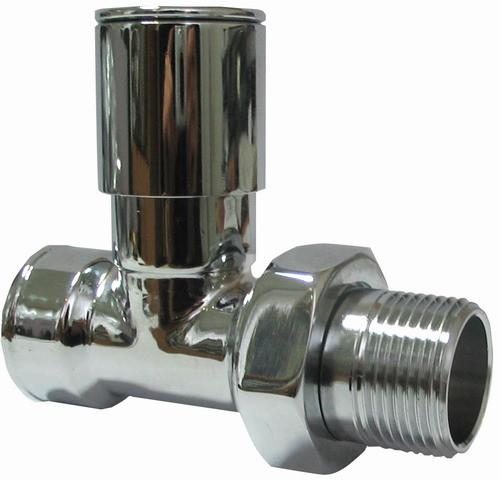
Straight Faucet American
American cranes can be classified according to several criteria. For example, by design, there are two types: petal and lever cranes. For the installation of elements of the heating system, petal-type devices are often used. Lever valves are usually installed on pipes with a smaller diameter.
Also, there are straight and corner American women for a heated towel rail, intended for straight sections of the water supply and corner joints, respectively.
The fitting material can also be different:
- brass plated with chrome or nickel;
- cast iron;
- steel is usually stainless;
- combined materials with polypropylene inserts.
By the type of connecting joints, "American" can be divided into two groups:
- Cylindrical: Fittings are sealed using rubber, polyurethane, or paronite gaskets. The seal in the joint needs to be replaced regularly. And the connection itself must be regularly tightened.
- Conical ones do not need additional sealing, therefore they are often used precisely when installing heated towel rails. They have a longer service life, create a uniform joint.
Note: if the pipe axes deviate no more than five degrees, the connection with the cone valve will be absolutely tight, resistant to temperature extremes and other influences.
The towel warmer is dripping (leaking), what should I do?
Have you noticed that heated towel rail leaking... Something needs to be done, as women say.
Do I need to shut off the water?
Situation 1. Definitely necessary if water flows out in significant volumes and there is a serious risk of flooding your bathroom, apartment and neighbors below. We are looking for a couple of containers and organize a watch for the timely drainage of water, while we ourselves run (call) the housing office and insist on shutting off the water. To be convincing, you can promise a mogorych - you don't have to choose, repairing a neighbor's apartment will be more expensive.
Heated towel rail leaks - What to do?
A heated towel rail in the bathroom performs two functions at once: it heats the room and dries the bath towels laid out on it (hence its name).
- The main reasons for the leak
- Eliminating the leak
In fact, it is a serpentine curved radiator pipe connected to a riser of a heating or hot water supply system.
It often happens that, due to thermal expansion during operation, under the influence of increased pressure and corrosion, a heated towel rail is leaking.
What to do in this case? How to fix a leak? Everything in order.
Repair of water heated towel rails
Repair of water or electric heated towel rails is the most common reason for consumers to contact service centers. Why is a modern heated towel rail model so important in every bathroom and can its failure be avoided? Our experts answer this question in as much detail as possible in order to eliminate all inaccuracies and misunderstandings among clients.
The most common reasons for contact
Our experts offer a professional installation of a heated towel rail, which will provide the most efficient access to the product and all the necessary service work.
With the correct connection, a tap is installed that allows you to disconnect the heated towel rail from the main heating system and, at the same time, do not shut off the hot water.
This installation method allows you to carry out preventive and repair work aimed at eliminating the cause of failures.
What should be done if the water heated towel rail does not heat up? and what are the most common reasons that can lead to such a development of events?
Service center employees constantly hear the same list of complaints. All requests can be conditionally divided into several categories:
• The heated towel rail does not heat - there is no circulation. In some cases, the reason for this may be an incorrect wiring diagram. Attempts to connect independently in the absence of the necessary tools and experience lead to the fact that after the completion of all installation work, there is no circulation in the heated towel rail.
It is almost impossible to correct the situation yourself, because there can be quite a lot of reasons why water does not circulate in a heated towel rail. In this case, calling the wizard will help not only to understand the true essence of the breakdown, but also to eliminate it in a timely manner.
There is also a possibility that the heated towel rail is airy and you will need the help of a specialist to remove air from the system, ensuring full circulation of hot water.
• Heated towel rail leaks. The most common reason that a heated towel rail is leaking at the junction is an incorrect connection. Only special materials and fittings that can withstand hot water should be used at the time of installation.
If a heated towel rail leaks, you will need the help of a professional to perform the correct connection of all elements of the heating system. It should be clearly understood that if a heated towel rail drips at the junction, then it is unlikely that it will be possible to do without the help of professionals.
If a heated towel rail is flowing at the junction, then such a process is fraught with product failure, as well as the risk of flooding the neighbors with a long absence of owners and increased leakage.
• Blockage. If the water in the heated towel rail is cold, then this may indicate the presence of a blockage that prevents the free circulation of liquid inside the system. Replacing water pipes inside an apartment or house, installing filters, as well as timely service work will help eliminate the likelihood of blockages and failure of the heated towel rail.
How to fix a leak
If, in the process of visual assessment of the condition of the heated towel rail, rust is found at the joints or on the surface of the product, then it is advisable to perform a complete replacement of the entire structure or its individual parts covered with corrosion.
If necessary, it is recommended to install a hydraulic protection. In places of dents as a result of a water hammer, a strong water leak often occurs, which can cause an emergency.


The device must be positioned correctly to avoid future leaks.
During the audit, it may be necessary to replace shrunken or torn gaskets. In this case, the new elements must be smeared with silicone sealant. As practice shows, the most problematic places appear on old, already worn out models that have exhausted their resource or have lost their original strength.
Even minor cracks can quickly become large holes with large leaks. In this case, the repair work is unprofitable, and the purchase of a new model is much cheaper.
Why does the heated towel rail rust and leak | Protection against electrocorrosion
In April of this year, FOR THE FIRST TIME IN BELARUS, the mass production of heated towel rails of the "Ladder" type with protection against electrocorrosion will begin !!!
Why is this topic so acute and relevant? In fact, consumers often ask questions about what is the protection of a heated towel rail from electrocorrosion., they are also concerned with topics such as:
- What is this "heated towel rail electrocorrosion", "stray currents", or the more general term "electrochemical corrosion"?
- Why is a stainless steel heated towel rail still leaking?
- Why does almost none of the manufacturers give a guarantee if a heated towel rail is leaking due to electrochemical corrosion?
- Is it possible to protect a heated towel rail from stray currents at all?
Later in the article we will try to answer these questions in more detail.
Stainless steel towel warmers
One of the popular materials from which heated towel rails are made is stainless steel, or "stainless steel". The name suggests that this material does not rust.
The presence of oxygen in our tap water has always been the main cause of corrosive black or galvanized steel heated towel rails. Indeed, a stainless steel heated towel rail is not subject to this kind of corrosion for at least 10 years, provided that high-quality stainless steel is used, for example, the AISI 304 brand.
However, one circumstance is an exception - these are stray currents in a heated towel rail. They are the reason for the question "why is the heated towel rail leaking?".
What are stray currents in a heated towel rail?
The nature of the occurrence of currents in tap water is still not fully understood. Therefore, it is difficult to find methods to combat this phenomenon. At the moment, all manufacturers of heated towel rails recommend grounding as a way to solve this problem.
For example, there may be such a case: a neighbor on a riser grounds a faulty household appliance (most often it is an old "washing machine") on the water supply pipes. Thus, the currents propagate through the pipes, and since the supply of polymer pipes is made to the heated towel rail (i.e., the pipe material is dielectric), the current passes into the water, and a process begins, which leads to the inside of the heated towel rail rusting.
As a result, points with signs of corrosion appear on the heated towel rail. The number of these points increases over time, and the initial points increase in diameter, and you can already notice a slight leakage of water through them. The electrochemical corrosion process has begun. Here is the answer to the question of why the heated towel rail is flowing.
In the case described above, grounding will help save your heated towel rail.
For this you need:
- Make potential equalization: connect the metal parts of the riser with a copper wire. The places where the wires are attached to the pipes must first be cleaned of paint.
- For reliability, ground the metal riser itself. It is necessary to bring the copper wire from the riser to the PE-bus of the nearest storey electrical panel. First, you need to make sure that the grounding on the electrical panel is operational.
However, the case described with an old washing machine is not often the case in practice. It is much more common for products to deteriorate due to other causes that cause electrical corrosion of stainless steel. And the installation of grounding is no longer able to provide full protection for the heated towel rail.
Currents can even occur in the device itself. For example, in hard water, simply due to the contact of incompatible materials: for example, a brass sleeve with the steel body of a heated towel rail.
The reasons for the corrosion of the heated towel rail may be different. However, the consumer is interested not so much in the reasons that cause rusting of the device, as in the protection of the heated towel rail from electrocorrosion.
In Belarus, the question is often asked: a heated towel rail is leaking, what to do with this problem? The problem is especially urgent in cities with hard tap water with a large presence of salts and chloride compounds.
These cities include Soligorsk and Mikashevichi. In part, this problem is relevant for Baranovichi, Luninets, Vitebsk, Gomel and Minsk.
Protection against electrocorrosion
To solve the problem, our engineer and technologist have developed a special protection for the heated towel rail. Thanks to it, the service life of the product in cities with hard water is extended three times compared to a stainless steel product without this protection. And provided that grounding is installed, and brass fittings are not used when connecting a heated towel rail, the service life will further increase significantly.
I must say that this protection is installed only in products of the "Ladder" type, and M- and MP-shaped heated towel rails are produced without protection against electrochemical corrosion.
We offer reliable heated towel rails of the "Ladder" type with protection against electrocorrosion. They will be relevant both for residents of Belarus and for other countries where the same problem exists:
- Kazakhstan (Astana and most cities in central and northern Kazakhstan).
- Russia (Moscow, Chelyabinsk region, Kaliningrad region, Primorsky region and a number of other regions and cities), etc.
We are ready to provide these cities and regions with our heated towel rails with protection against electrochemical corrosion. For the convenience of settlements, companies in Russia do not need to work directly with Belarus.
Signing contracts, issuing documents and all settlements will be carried out through a Russian company. In this case, transport costs, as a rule, do not exceed 5% of the product cost.
The shipment of heated towel rails is carried out to the Russian Federation by means of transport and fuel and energy complex "Transaviatour" ...
We are waiting for your orders!
Source: https://glossreiter.by/elektrokorroziya-polotencesushitelya/
Types of heated towel rails
Heated towel rail connection unit.
- A water appliance, this type is the most popular, usually it is connected to a heating system, less often to a hot water supply system. Its operation depends entirely on the heating season or on the availability of hot water in the house. If the device is connected to a water supply system, then its possible transfer is completely excluded, because this can adversely affect the water supply of the entire riser. But if it is connected to the heating system, then the transfer is allowed.
- An electrical appliance works in the same way as a conventional electric heater. Most often it is installed when connection to water is difficult or not possible. You can install such a device anywhere in the bathroom; in addition, its heat transfer can be adjusted.
- The combined type belongs to the most expensive and modern types, it is heated by central heating in winter, and in summer it works on the principle of a boiler, that is, from water heated by a built-in electric heater.
Related article: Wardrobe in the hallway with your own hands: a master class on making a wardrobe
Connection diagram for a stainless steel heated towel rail.
The material used for the manufacture of heated towel rails:
- brass;
- copper;
- aluminum;
- stainless steel.
Experts advise paying special attention to the material from which the device is made. The most durable and reliable model is considered to be stainless steel. We learned to make high-quality domestic heated towel rails from this material. As for foreign manufacturing companies, due to the shortage of steel, they produce reliable devices from chrome-plated brass.
Forms of heated towel rails:
- U-shaped;
- M-shaped;
- in the form of a ladder;
- in the form of a coil.
Heated towel rail device.
Electric towel drying devices, in addition to the above-mentioned forms, have more complex ones. This includes models with movable bars, in the form of a lattice, comb or butterfly. There are even more complex models that modern interior designers offer their customers, but their price is very high.
It is important to know that a heated towel rail can be made from a seam or seamless pipe. Seamless patterns are much more expensive than the first types, because uniquely seamless pipes flow less often, and only at the joints, therefore, they have a longer service life and high quality in use of the product.
Basically, consumers today use a water heated towel rail, because this type is the most affordable for the consumer, it is easy to use and the installation of the device itself has been familiar to everyone for many years.Electric and combined models are generally not popular due to the complexity of the installation work and the high cost.
How to fix a leak in a heated towel rail?
When a person buys a heated towel rail, it may not always be of high quality. On the outside, they are all attractive and, at first glance, good. But there are manufacturers who sell defective towels. As a result, unpleasant situations happen.
Some time after installation in the bathroom, the towel starts to leak. When the water starts, high pressure is created, which finds a weak point, a thin wall of the towel, and squeezes out a small hole in this place through which water oozes.
You can eliminate any leak with a clamp, but for this you first need to turn off the water supply to the towel.
How to bleed air from a heated towel rail
Usually, air accumulates in the hot water system before starting water. Accordingly, it enters the water supply systems of multi-storey buildings.
Heated towel rail "Sunerzha"
produces reliable heated towel rails made of high-quality stainless steel that can withstand a pressure of 25 atmospheres and temperatures up to 105 degrees.
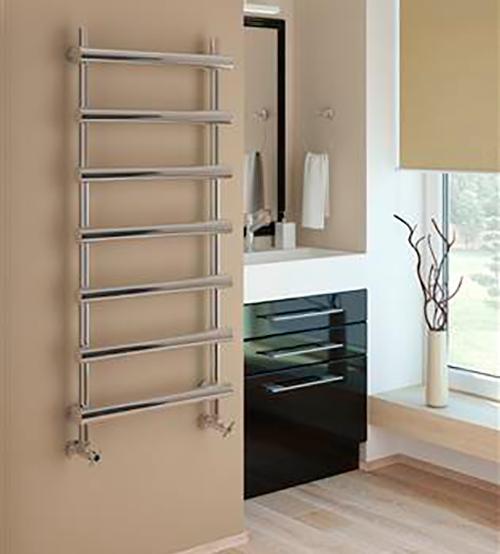

You can choose the right design that fits any bathroom layout. Simple fitting connections allow for quick and easy gasket changes.
The Sunerzha heated towel rail is popular in the market due to its ease of connection and reliability.
Why is the heated towel rail leaking?
In the list of perpetrators of apartment floods, the heated towel rail takes an honorable second place after a burst radiator. And it causes trouble not only years after installation, but after a month or two. Why is the coil leaking? Let's find out the reasons and take a closer look at the most common ones.
Reasons for a heated towel rail leak
1. Poor sealing at the junction of the heated towel rail with the pipeline. Sealing wear.
Often leaks at the joints are associated with the use of outdated seals - for example, linen strand. Linen is susceptible to decay, swells due to contact with water, and also provokes the appearance of corrosion on the threads. As a result, the connection ceases to be airtight, water seeps out. The linen seal should be changed every 2-3 years. Otherwise, a sudden leak will not keep you waiting.
To "make and forget" and live peacefully without fear of a flood, use modern sealants to seal the threads - gels, synthetic threads. This is a great alternative to rubber pads, linen winding and FUM tape.
2. Water hammer with a sharp increase in pressure in pipes
The phenomenon is rare, but possible. Apartment buildings are not 100% protected from it. It can "hit" during hydraulic tests, when the work is carried out incorrectly. This is due to the human factor or old equipment - it's hard to understand. The only plus in such a situation for the homeowner is that the responsibility for the leakage and deluge lies with the heat point or the management company. This means they will compensate for the damage.
3. Mechanical damage to the coil or joints with pipes
It happens during repairs or other work in the bathroom (replacing the door, connecting the washing machine, etc.).
4. Poor installation and connection of a heated towel rail
Possible when replacing an old coil. If the team worked carelessly and used bad sealants, sooner or later this will manifest itself. Therefore, always conclude a contract with workers, even if you chose them by acquaintance. Only official paper gives the right to make claims to the quality of the work performed and demand compensation.
5. The characteristics of the device do not match the requirements of the system
The most stylish and original heated towel rail will be useless in your bathroom if it does not meet the requirements of the domestic water supply and heating system. The selected heated towel rail (for a design or a low price) may not withstand the working pressure in the pipes and may not match the ph of the local water. Carefully study the passport of the equipment before purchasing to avoid unnecessary expenses.
6. Corrosion outside and inside the heated towel rail
Let us consider this reason in detail, since it is corrosion that is the main enemy of plumbing, spoiling equally new and old equipment.
Corrosion on a heated towel rail appears due to:
• Low quality anti-corrosion coating. This is a manufacturing defect, and you have the right to return the coil to the seller, having received the money back. Damage during pipe bending also belongs to defects. Subsequently, microcracks are covered with rust and they leak. • Unsuitable material.
If the heated towel rail is not made of stainless steel, but of thin chrome-plated or nickel-plated steel. In this case, in the places of coil bends, the coating quickly comes off and the pipes rust. • Draining water in the heating system. Draining corrosion forms inside the coil and gradually eats away at the pipe.
• Stray currents.
They arise if: the heated towel rail is not grounded; a washing machine, water pump or electromagnetic water filter is poorly grounded; when replacing steel pipes with polypropylene or metal-plastic, grounding was not performed (the same with replacing the coil itself); pipes and heated towel rails are made of materials with different electrochemical potential, which causes electrocorrosion.
How to understand that there are stray currents? You may notice rusty spots on the surface of the coil. First - if you look closely, then - with the naked eye. The dots gradually become larger, and eventually form cracks through which water appears. The stray currents "eat up" the pipes.
The main reasons for the leak
Such a nuisance as a leak can occur at any time. And not only with an old and long-used heated towel rail, but also with a new, recently installed one. The reasons for this can be very diverse:
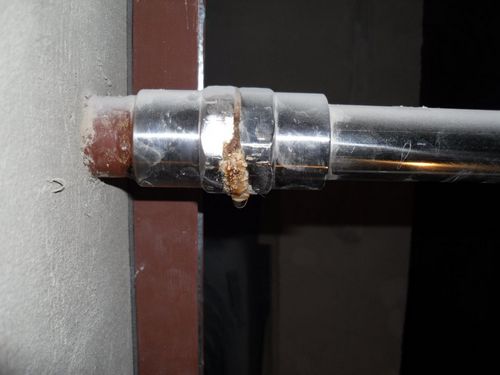

Reasons for the leak
- Towel dryers that have been in use for a long time can corrode. It should immediately be noted here that not only the metal pipes themselves are subject to corrosion, but also the places in which they are connected.
- Mechanical damage. In this case, a leakage problem may arise if the heated towel rail is accidentally damaged by some foreign object. Very often, mechanical damage occurs during repairs in the bathroom, as well as with a careless attitude to the dryer.
- Wear of parts. This is the main problem. Due to the wear of the rubber bands and gaskets, the dryer begins to flow precisely at the joints.
- Incorrect operating conditions. Often there are cases when a heated towel rail is completely different from the functioning of the system in the bathroom. So, for example, it can be noted that the coil may not be designed at all for the pressure from the system.
- Poor installation. A negligent attitude towards the installation of plumbing products, as well as non-compliance with simple rules during installation, can lead to a dryer leak.
- Defective equipment. Exceptions are quite rare, and mostly defective models very soon remind the owners of their shortcomings.
- Incorrectly routed pipes. During installation, the ends of the pipes may be pulled out crooked. In this case, you should not be surprised that after a while your heated towel rail began to leak.
As you can see for yourself, there are a lot of reasons for this. Even an insufficiently tightened internal hex can cause you a lot of trouble, including leakage too.That is why it is important to know not only the cause of the leak, but also a good enough way to quickly stop this leak.
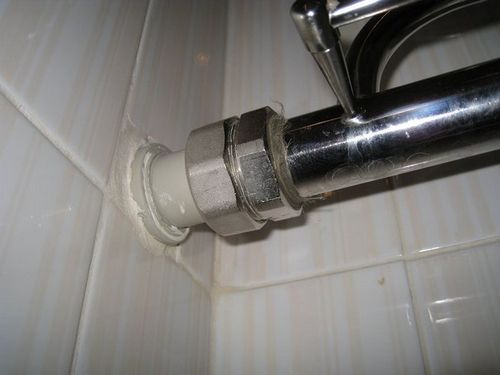

Eliminating the leak



